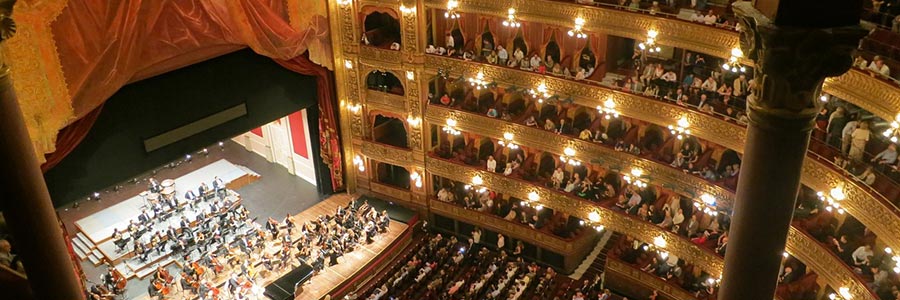Artistic communication between performers and audience

Theatre is the name for a scenic representation of an internal and external event as artistic communication between actors and the audience. The word theatre can also mean the building in which theatre is performed, or the process of performing theatre, or generally a group of people who make theatre, i.e. a theatre group.
The large theatres have sufficiently large side stages on which the sets and props for the various scenes of the ongoing play can be “hidden”. Nowadays, the backstage is seen in modern productions as a welcome opportunity to achieve great depth in the playing area. The upper stage, the Schnürboden (“stage sky”), is at least as high as the visible stage itself simply because of the Iron Curtain. Hanging up there are the curtains, stage sets, etc. that are needed when the stage is converted from one scene to the next. can be lowered using cable pulls. Near the stage you will find the artists' wardrobes as well as hand magazines for the daily needs of props and decorations.
In opera houses and multi-part theatres, the orchestra sits in the orchestra pit between the first row of seats and the stage ramp, which is usually lowered in musicals, operas and operettas. Large houses have revolving stages and also parts of the stage floor that can be lowered hydraulically. Because the auditorium is dark during the game, but the stage is illuminated with spotlights from the direction of the audience, the actors on stage are “blinded”. You don't see the audience. They play against the “fourth wall” created by the brightness of the en-face lighting.
Es gibt keine Beiträge in dieser Kategorie. Wenn Unterkategorien angezeigt werden, können diese aber Beiträge enthalten.